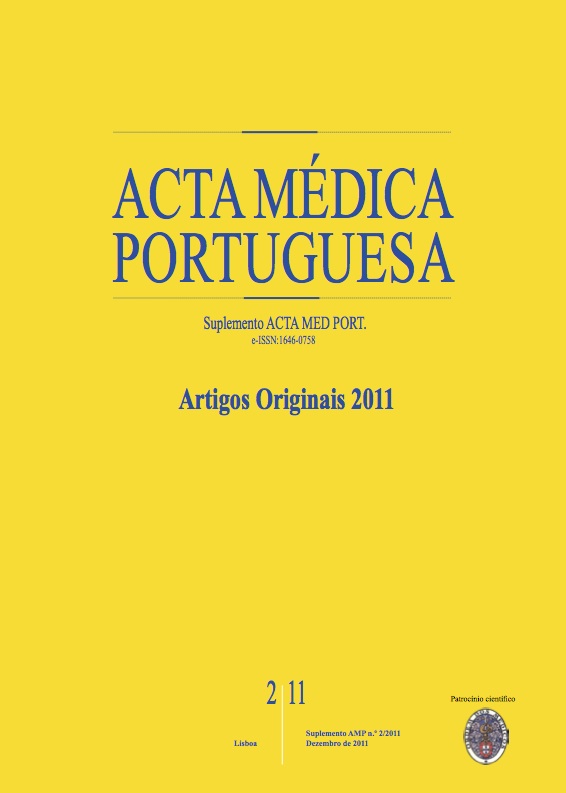Importance of primary indications for fetal echocardiography proposed by the Portuguese Health Department.
DOI:
https://doi.org/10.20344/amp.1482Abstract
Congenital heart disease is the most frequent congenital malformation, affecting about 5-8 newborn per thousand live births. Nowadays it is possible to do prenatal diagnosis of these conditions with fetal echocardiography (EcoF) but because health resources are limited this exam must be ordered according to the criteria established by the Portuguese Health Department.Evaluate the importance of the referral criteria for fetal echocardiography attending to the cardiac anomalies identified. To determine prevalence and mortality rates in fetus with cardiac anomalies.Retrospective analysis of the clinical records of 733 fetus to which was performed EcoF in the Prenatal Cardiology consultation of a tertiary center of Pediatric Cardiology, between 2006 and 2008. Were registered demographic data, referral motif, EcoF results and follow-up data. The referral motif was classified in two groups: (I) The "Risk Group"--which referral was consistent with the Health department indications and this included major causes (family, maternal, fetal) and minor causes (other situations), and the "No risk Group" (II)--which referral wasn't consistent with those indications.During this period were performed 871 fetal echocardiograms to 705 pregnant women. The median maternal age was 32 years (15-45 years) and mean gestational age was 26 weeks (± 4 wk). The "Risk group" included 89.5% of the sample. Were identified 52 cases (7%) with cardiac anomalies in fetal echocardiography: 42 structural anomalies, 8 rhythm anomalies and 2 pericardial effusions. These abnormalities were distributed as follows: "Risk Group"--family cause (3), maternal cause (3), fetal cause (39), minor cause (5) and "No Risk Group" (2). The "Risk Group" had more cardiac abnormalities (6.8% vs 0.3%) (p>0.05), specially the "fetal cause subgroup" (p<0.05). Were missed on follow up 10 positive cases, there was 3 medical pregnancy interruptions and 3 children died. Eleven positive cases maintain follow-up on Pediatric Cardiology consultation.Most of the cases fulfilled the referral criteria established by the Health Department, but there was no statistically significant difference in the prevalence of fetal cardiac anomalies in pregnant women with and without risk factors. The fetal cause was the best related to the presence of cardiac disease. The prevalence of cardiac anomalies and the mortality rate may be underestimated in this sample due to the loss of positive cases in the follow-up.Downloads
Downloads
How to Cite
Issue
Section
License
All the articles published in the AMP are open access and comply with the requirements of funding agencies or academic institutions. The AMP is governed by the terms of the Creative Commons ‘Attribution – Non-Commercial Use - (CC-BY-NC)’ license, regarding the use by third parties.
It is the author’s responsibility to obtain approval for the reproduction of figures, tables, etc. from other publications.
Upon acceptance of an article for publication, the authors will be asked to complete the ICMJE “Copyright Liability and Copyright Sharing Statement “(http://www.actamedicaportuguesa.com/info/AMP-NormasPublicacao.pdf) and the “Declaration of Potential Conflicts of Interest” (http:// www.icmje.org/conflicts-of-interest). An e-mail will be sent to the corresponding author to acknowledge receipt of the manuscript.
After publication, the authors are authorised to make their articles available in repositories of their institutions of origin, as long as they always mention where they were published and according to the Creative Commons license.









